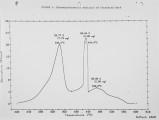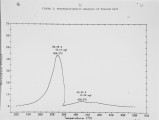| Title |
Particulate Emission Control by the Application of Combustion Catalyst |
| Creator |
Shah, Jitendra |
| Publisher |
University of Utah |
| Date |
1984 |
| Spatial Coverage |
Tulsa, Oklahoma |
| Abstract |
A combustion catalyst was developed to improve combustion and reduce particulate emissions from a bark fired boiler. Laboratory experiments showed significant reduction in ignition temperature and an increase in rate~of burnout of bark when mixed with combustion catalyst. It was then field evaluated on a bark boiler which was marginally out of EPA particulate compliance limits of 0.1 pounds per million BTU. An electron microscopic x-ray analysis showed a high level of potassium and sulfur present in the particulate emitting from the stack. Majority of the particles were less than 0.3 microns. The particulate emissions were found to be a strong function of excess air and catalyst feed rate. Application of combustion catalyst reduced particulate emissions from an average baseline value of 0.14 to 0.09 pounds per million BTU. Mechanism of combustion catalyst is also discussed. |
| Type |
Text |
| Format |
application/pdf |
| Language |
eng |
| Rights |
This material may be protected by copyright. Permission required for use in any form. For further information please contact the American Flame Research Committee. |
| Conversion Specifications |
Original scanned with Canon EOS-1Ds Mark II, 16.7 megapixel digital camera and saved as 400 ppi uncompressed TIFF, 16 bit depth. |
| Scanning Technician |
Cliodhna Davis |
| ARK |
ark:/87278/s63b62pz |
| Setname |
uu_afrc |
| ID |
1435 |
| Reference URL |
https://collections.lib.utah.edu/ark:/87278/s63b62pz |




















